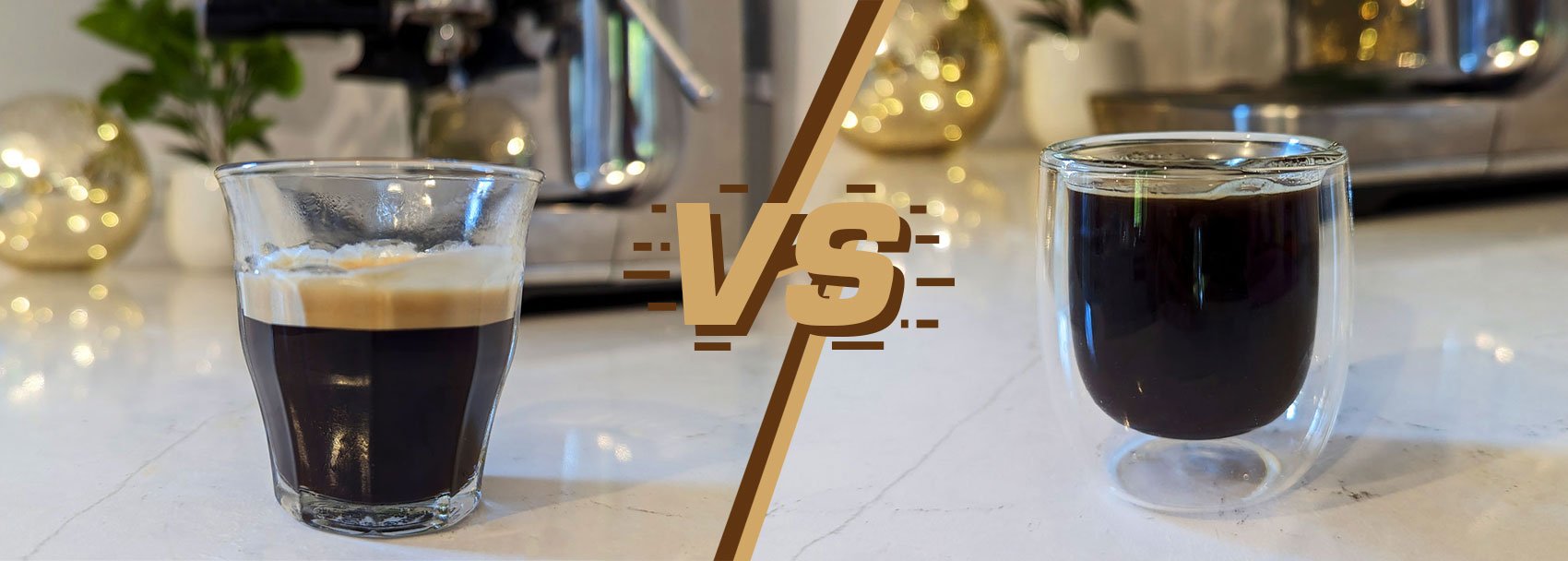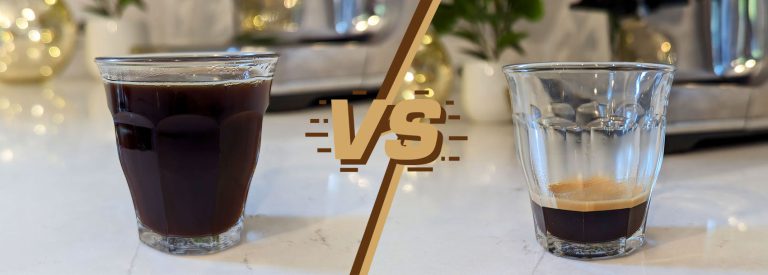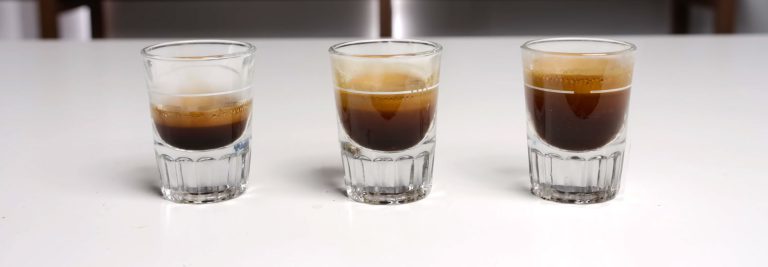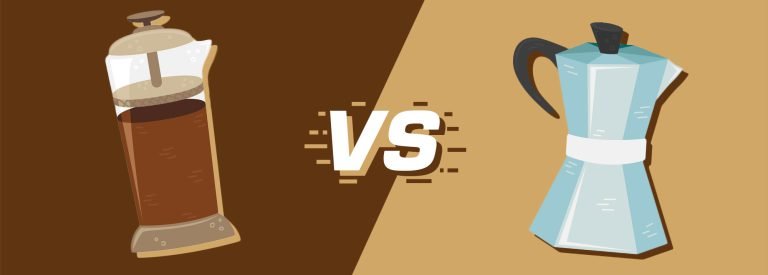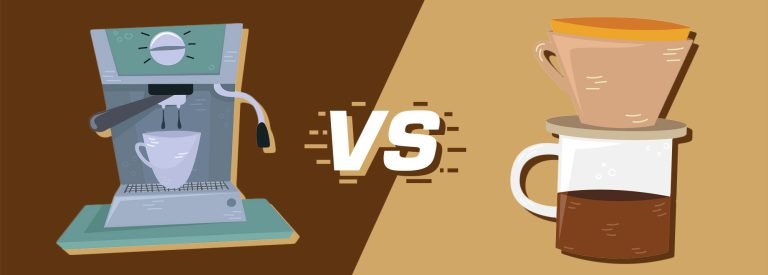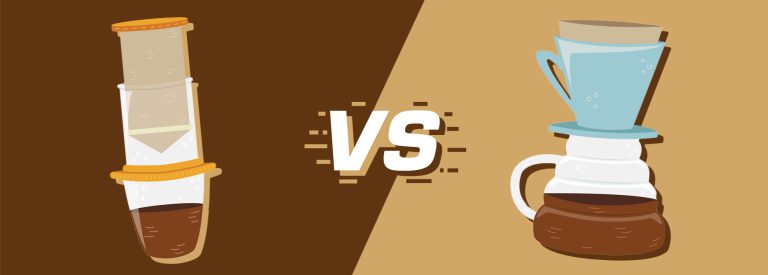Espresso vs Lungo: 5 Interesting Differences
Espresso and lungo coffee are two of the most popular types of coffee. But what’s the difference between them? Is one better than the other?
Espresso is made by forcing hot water through finely-ground coffee beans. This results in a strong, concentrated coffee with a thick layer of crema on top. On the other hand, Lungo is a weaker, diluted version of the espresso. It is made by either allowing hot water to flow through the coffee grounds for longer or using a coarser setting on your coffee bean grinder.
Let’s take a closer look at the detailed differences between these two types of coffee.
What is an espresso?
Espresso is made with a special espresso machine that has a boiler for heating the water and a pump for creating high pressure (of at least 9 bars). The pressure forces the hot water through the coffee grounds and into the cup. The resulting coffee is full-bodied with a slightly bitter taste, depending on the beans used.
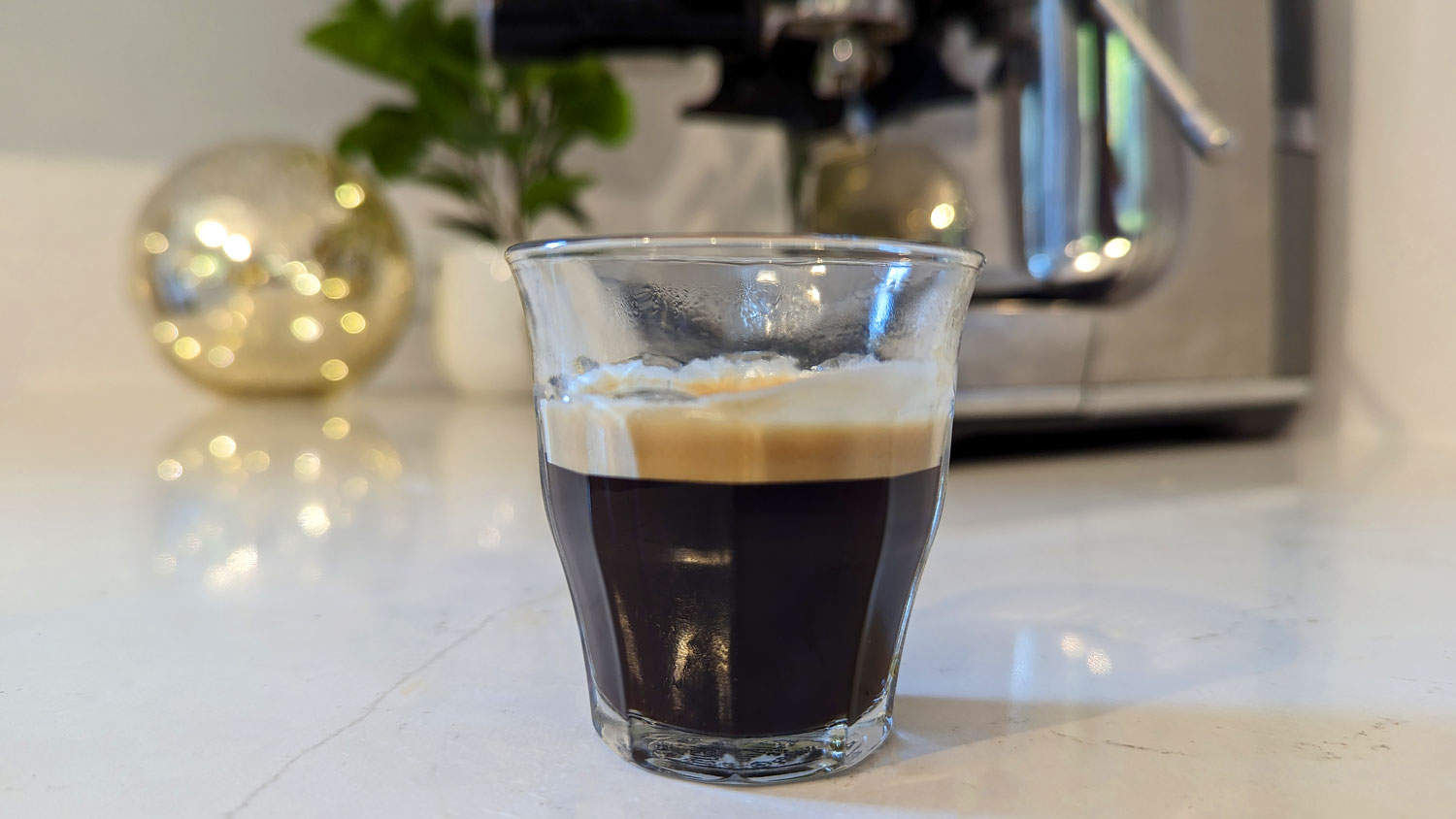
Espresso is about 1oz of coffee.
When grinding your coffee beans for an espresso, you need to use a burr grinder and dial in a fine grind size. You use about 7-8 grams of ground coffee.
A shot of espresso is used as the base for all sorts of coffee beverages, like cappuccino, latte, tonic-espresso, etc.
What is a Lungo
The Lungo is an extended espresso that gives coffee drinkers a longer coffee experience. The name comes from Italian. “Lungo” is the Italian word for “long” and basically refers to another way of preparing espresso. Some people compare the lungo to the American black coffee you get from a drip coffee maker, but it’s not the same at all.
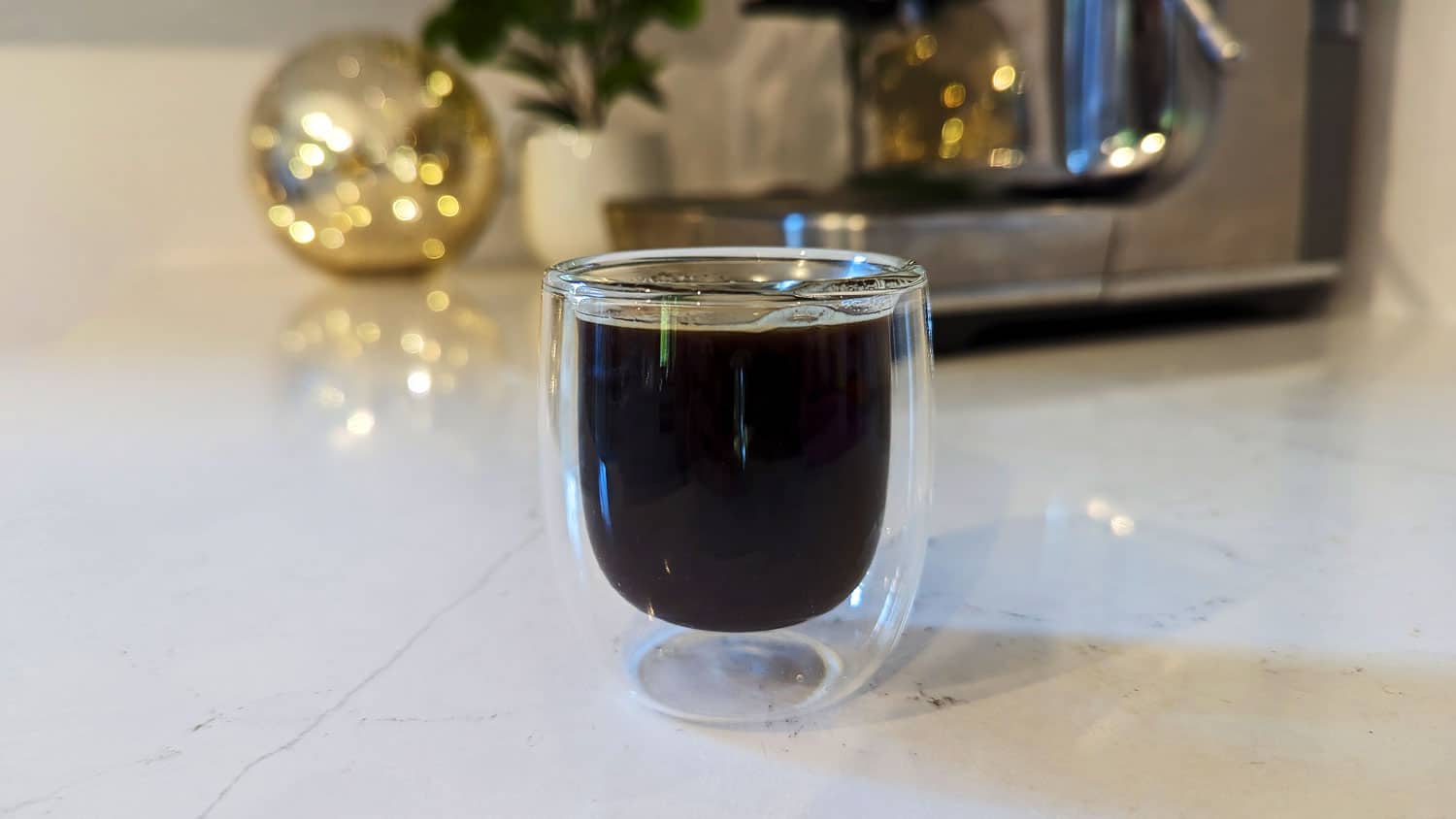
The key difference is that lungo is about 2 oz of coffee, double the volume of a normal shot of espresso. It is made in an espresso machine as well, using the same dose of ground coffee.
There are 3 ways to make a lungo:
- Use the same fine bean grind setting as for an espresso, and lengthen the extraction time to about 40-50 seconds to let more water flow through.
- Use a coarser grind setting than for an espresso, and stick with the 25 second extraction time. The coarser grind will let more water through.
- A híbrid method, which combines both of the above.
While a lot of cafés use the first method, it is not correct.
When you simply lengthen the extraction to 40 seconds, the beverage is more diluted but also more bitter and therefore tastes very different from ordinary espresso.
I prefer the second method of brewing a lungo, since the first creates a slightly more bitter taste due to the longer extraction time.
Differences between an espresso and a lungo
Besides the above differences in the preparation of the two beverages, here is a table comparing other aspects of espresso with lungo coffee.
| Espresso | Lungo | |
|---|---|---|
| Grams of coffee grounds | 7-8 g | 7-8 g |
| Brew ratio | 1:2 | 1:3 to 1:4 |
| Beverage volume | 1 oz | 2 oz |
| Caffeine content | Less caffeine | More caffeine |
| Appearance | Golden crema, deep color | Less crema, less color |
| Taste | Intense, rich flavors, less bitter | Diluted, more bitter notes |
Let’s talk a bit about these aspects in more detail.
Volume
It is important to note that you use the same amount of coffee grind for both an espresso shot and a lungo.
A lungo is approximately double the size of a regular espresso in volume, which means that your brew ratio will increase from 1:2 in an espresso, to 1:3 in a lungo.
The regular 1oz cup of espresso will become 2 oz in a lungo.
Taste concentration, bitterness
The longer the coffee is in contact with water, the more diluted, but more bitterness your cup will have. Therefore, a lungo will be a less concentrated coffee because it is a coffee that contains much more water, but it has a more bitter taste than a ristretto or a normal espresso.
Why?
This extra bitterness can be attributed to the fact that most of the coffee components that cause bitterness are dissolved later in the extraction process. Therefore, extending the amount of time needed to take the drink allows more time for bitter notes to enter the coffee.
But with that said, some people don’t necessarily taste the extra bitterness because of the higher water content.
A normal shot of espresso will be more robust. It will have a more intense flavor than a lungo, and be less bitter.
Caffeine content
The amount of caffeine in a cup depends on the time that the water and coffee are in contact. Thus, a lungo will contain more caffeine than an espresso, although it has a less intense flavor, because during their preparation more components are extracted from the coffee itself.
Nespresso espresso and lungo capsules compared
The Nespresso capsule contains ground coffee made for either espresso or lungo specifically. The type of coffee blend and grind size is different in both capsules.
When you press the espresso or lungo button on a Nespresso machine, differing water volume will flow through the coffee. Nespresso lungo capsules have slightly coarser (larger) grind coffee in them, so the extraction time should be more or less the same as an espresso capsule.
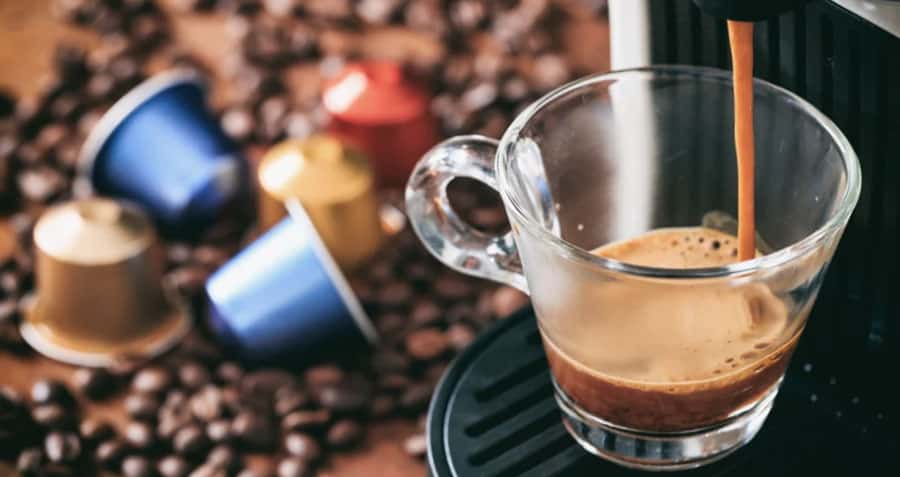
Should you use a Nespresso lungo capsule for making an espresso?
No, you should not. The larger grind size in a Nespresso lungo capsule would make your espresso weak and not as intense as an espresso deserves to be.
And on the other size, should you make a lungo using a Nespresso espresso pod?
You can, but using a Nespresso espresso capsule to make a lungo will lengthen your extraction time due to the smaller grind size, making your lungo more nitter than it should be.
So, which one should you choose?
You need to try both to find out what you like best.
If you like a strong, bold cup of coffee, then espresso is probably the way to go. You can add steamed milk to make a variety of coffee drinks out of it.
But if you prefer a weaker, more mellow cup of coffee, then lungo is probably a better choice.
I recommend only using Arabica coffee for lungos, as they will not be as bitter as a lungo made from a Robusta blend.

